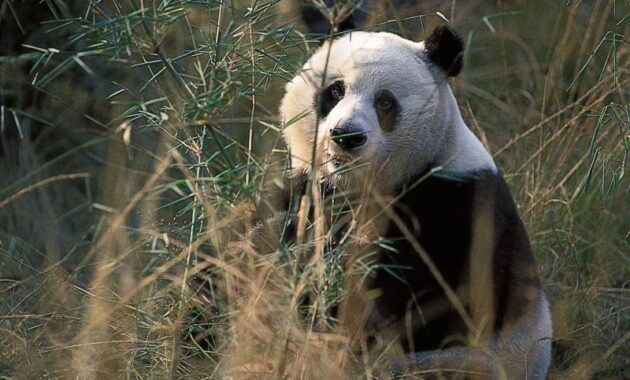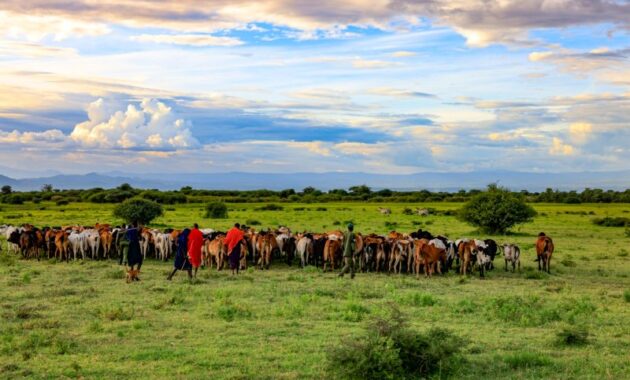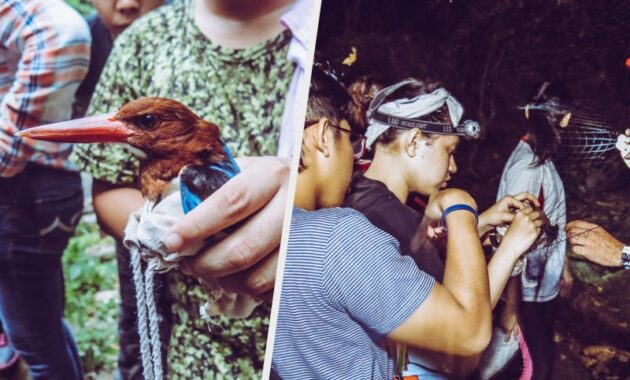Community-based Conservation – Community Based Conservation (CBC) is a biodiversity conservation approach where local communities participate in the preservation, protection, restoration and/or management of an area’s biodiversity.
The movement began in the 1980s following mass protests that emerged in response to international biodiversity conservation efforts. This is because classical biodiversity conservation ignores the needs and rights of indigenous and local communities.
Community-based Conservation
The early conservation movement was largely based on western ideology. The development of policies and thought patterns can be traced back to subsidies in America since European settlement. Ideology refers to the belief that nature is separate from culture.
Community Based Conservation In A Globalized World
Because traditional conservation follows a top-down approach, governments and private institutions gain ownership of local areas and ignore the people who live there.
This occurred in 1872 with the establishment of Yellowstone National Park, where approximately 20 million people were driven from their own land by European settlers to ‘preserve the wilderness’.
Most conservation projects continued to be implemented using this strategy until the 1970s when indigenous peoples began to demand autonomy and land ownership. So the concept of community-based conservation emerged.
What differentiates community-based conservation from traditional conservation is the recognition of the connection between culture and nature.
What Is Community Based Conservation?
The IUCN describes this biocultural approach as the co-evolution of two modes of diversity because cultural diversity is driven by biodiversity and biodiversity is influenced by human cultural practices.
Community conservation is a rights-based approach that prioritizes community agency, access and autonomy in decision making when recognizing and responding to injustices that occur (land grabbing, area closures, etc.).
Additionally, CBC focuses on promoting equality in the distribution of benefits and recognizing the role and efforts of women in conservation. The aim is to create multi-level intercultural relationships established globally to combat biodiversity loss worldwide.

Since its inception, community conservation has been developed in several countries around the world. Therefore, the strategies and practices adopted to integrate communities in conservation management vary based on various factors and vary from region to region. Ecosystem type, socio-economic background, government involvement, cultural and religious beliefs play an important role in determining success.
A Model Example Of Community Based Conservation
A successful example of community-based conservation is the community baboon sanctuary (CBS) in Belize. CBS is a pioneering experimental project in private land conservation. The conservation area is located in the riverine forests along the Belize River, which is home to the largest population of black howler monkeys in Central America.
The sanctuary was founded in 1985 by Dr Rob Horwich and community leader Fallet Young to protect the habitat of black howler monkeys by meeting local people’s needs for alternative livelihoods and land management.
After identifying conservation areas and contacting local community members, the researchers created a conservation strategy that included educational awareness programs, locally controlled ecotourism, and contacting local governments for support. In addition, a sanctuary development plan was also created which included property and vegetation mapping, howler census, land management preparation and involvement of land owners.
3 years into the project, more than 120 landowners signed voluntary agreements to manage land for the protection of black howler monkeys. Due to these conservation efforts, the population of this species increased from 800 in 1985 to 3,500 in 2017.
Pdf] Diversity And Sustainability In Community Based Conservation
Now managed by the local Women’s Conservation Group, the reserve still generates income through tourism and other small businesses.
Areas and areas conserved by indigenous peoples are known as Indigenous Community Conservation Areas (ICCAs).
IUCN and CBD (Convention on Biological Diversity) have officially recognized ICCA as a key factor in nature conservation.

About 20% of the ICCA area has been designated as ‘Protected Areas’, making it 40% of the global protected areas. The number continues to grow, with countries such as Canada developing local community-led protected areas, some of which cover up to 109,000 square km.
Community Based Conservation Opportunities To Help People And The Planet
ICCA is at the forefront of community conservation because it allows formal involvement of communities as managers and prevents large-scale exploitation of cultural and ecological areas.
Although CBC is an effective, long-term and efficient method of biodiversity conservation, research into long-term projects uncovered factors that may hinder the effectiveness of CBC projects –
There is a disconnect between conservation initiatives and economically underdeveloped communities. Although the need for conservation is well understood by local communities, the impact of severe poverty means communities are more focused on food and shelter than on saving forests or endangered species.
The CBC project in Madagascar sees this as a potential setback as the majority of the population are poor households, where a lack of support could hinder conservation efforts. Development support activities used as part of the program were found to be ineffective in reducing poverty, disease burden or public health.
Pdf) The Partners Principles For Community Based Conservation
Although these problems do not directly cause biodiversity loss, community conservation projects are difficult to address and mitigate effectively.
Community-based conservation projects provide different outcomes in terms of socio-economic benefits for local communities. Although CBC interventions in Africa have generally produced positive ecological impacts, they also appear to have produced negative or mixed social impacts. Negative social impacts are mainly related to unequal distribution of benefits and reduced social capital.
The devolution of local community rights is a hallmark of the CBC. Unfortunately, its implementation is not yet common in the field. In 1997, the central government of Malawi established the Forest Policy Act to transfer forest management authority to local village forest committees. However, only a few forestry committees are allowed to exercise this right because they must obtain approval from the minister at the central level.

Devolution of community rights is critical to creating stronger local structures, encouraging deeper leadership and engagement among community members.
Winning The “green Nobel Prize” For Community Based Conservation
Conservation through the help of local communities is only part of the solution to this problem. To overcome current limitations, multi-level management and greater collaboration between local community members, NGOs, governments and international bodies are essential. This will enable stakeholders to effectively achieve multiple goals through multiple knowledge systems and practices.
Therefore, community-based conservation must be seen as a pluralistic approach – starting from the grassroots and connecting with various levels of organization.
However, the future of endangered flora and fauna is in the hands of communities that have evolved together. It is our duty to protect the rights of these communities in order to protect the ecosystem of which they are a part.
Help us Please! Think Wildlife Foundation is a non-profit organization with various conservation initiatives. The most important campaign is Peduli Parisiatif. Pari is an elephant being rehabilitated at the SoS Wildlife Hospital. 25% of the profits from our shop are donated to the elephant hospital for Pari.
Apart from buying interesting merchandise, you can also donate directly to the Caring For Pari fundraiser. Conservation goals can only be achieved if local communities are effectively involved in conservation initiatives. This has led to the development of ‘Community Based Conservation’ (CBC) which emphasizes the role of communities in decision making.
CBC involves local communities in planning, decision making, implementation and monitoring of conservation initiatives. It is a holistic development approach that includes maintenance of socio-cultural practices, community development, promotion of indigenous knowledge, development of a sense of ownership and responsibility at the community level.
Nepal adopted CBC in the mid-1980s by establishing the Annapurna Conservation Area (ACA). The ACA has been planned, designed, and continues to be implemented successfully in Nepal, and to date, it is the only financially protected area (PA) in the country. Given its effectiveness, the ACA community-based conservation model has been adopted as the primary protected area management model in the country.
Introduction To Conservation, Communities And Equity
As a proven way to increase community participation in protected area management, help establish and strengthen community-based institutions – Conservation Area Management Committees (CAMC), Buffer Zone User Committees (BZUC) and Community-Based Anti-Poaching Units (CBAPU).
Through close consultation and engagement, it helps build constructive relationships between protected areas and local communities. This special arrangement between the national park and community relations is very important to reduce cases related to poaching, forest encroachment, illegal grazing, thereby helping to safeguard overall biodiversity.
Ultimately, we realize that communities must become local stewards and reap the benefits of conservation. To achieve this, we are working to strengthen conservation capacity at various levels. Our efforts to improve governance of natural resource management groups, improve the livelihoods of forest-dependent communities, encourage meaningful participation and equitable benefit
sharing for poor and marginalized groups and for women have a significant impact in creating lasting conservation outcomes. separate from the culture that was previously dominated by the field of conservation development. Today, a different approach is being taken: community-based conservation emerges through dialogue with local communities negatively impacted by
international environmental efforts, such as biodiversity protection. However, global inequality and inequitable consumption are major obstacles to cooperative conservation development projects. Capitalistic and competitive global markets shape leadership decisions and hinder the realization of the common good in all projects including community-based conservation. There must be a shift in focus from economic growth as a path to economic growth
Community based organization, what is community based conservation, community conservation, asset based community development, community based art projects, community based conservation projects, community based organizations, community based conservation examples, community based programs, community based research, community based program, community based websites
- Conservation Education Programs 2023 - August 19, 2024
- Endangered Species Protection - August 16, 2024
- Wildlife Habitat Preservation 2024 - August 15, 2024








